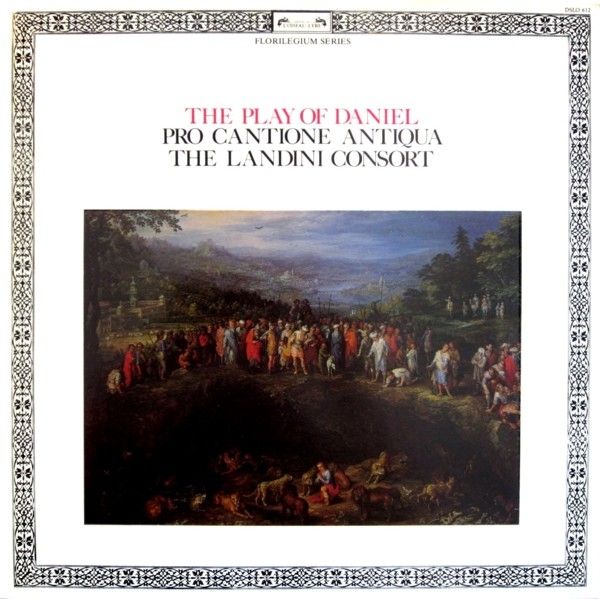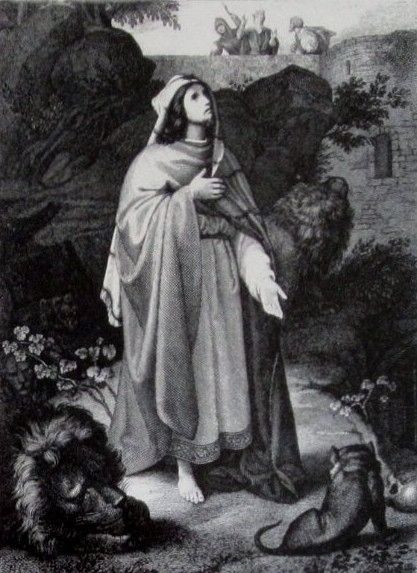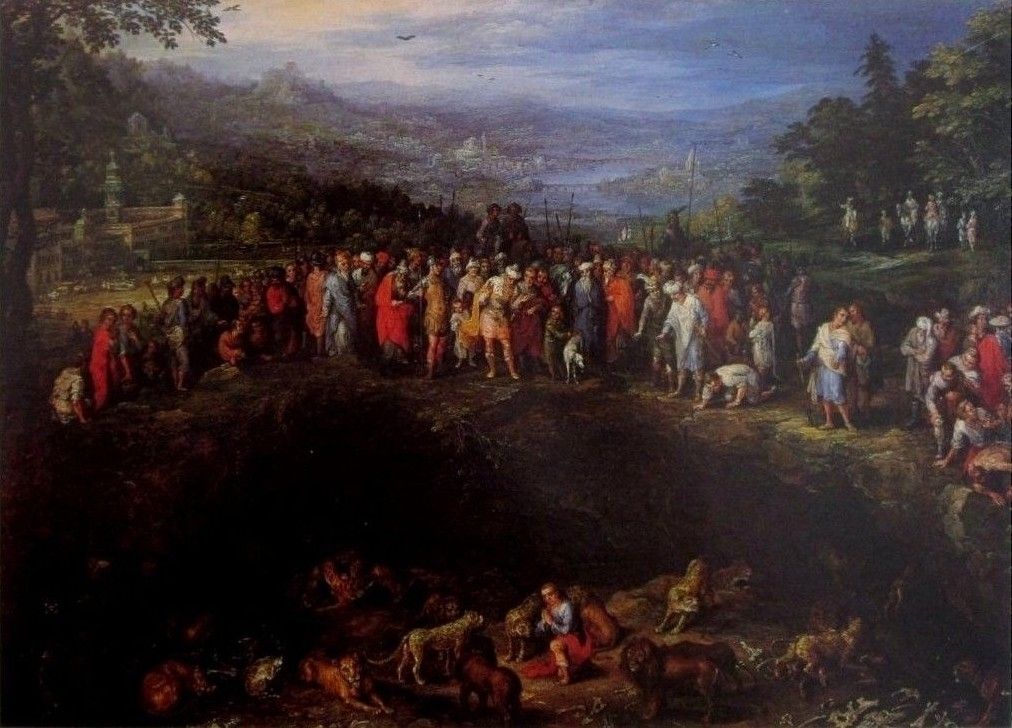The Play of Daniel
Pro Cantione Antiqua, Mark Brown
| The Landini Consort

medieval.org
LP, 1979: Argo ZRG 900
LP, 1983: L'Oiseau-Lyre DSLO 612
CD, 1992: Decca "Serenata" 433 731-2
1. Congaudeant catholici [2:27] Codex Calixtinus
cc 96 |
Mag. ALBERTUS Parisiensis, attr.
2. Ad honorem tui Christi [1:59]
3. Rex in aeternum vive... Vos qui paretis [2:39]
Jubilemus regi nostro :: CB 200 Bacche vene benies
4. Ecce sunt ante faciem tuam [4:16]
DEUXIÈME ESTAMPIE REAL
5. Rex in aeternum vive - Adsumus ecce tibi [5:17]
6. Vos Danielem quaerite [5:08]
DUCTIA STANTIPES
7. Rex in aeternum vive... Tune Daniel nomine [4:12]
8. Solvitur in libro Salomonis [2:30]
9. Beata viscera [4:16] PÉROTIN
10. Rex in aeternum vive... Audite principes [3:38]
LA SEXTE ESTAMPIE
11. G'en vois al roi [7:34]
12. E semine rosa [1:19] PÉROTIN, attr.
13. Abacuc tu senex pie [5:09]
DUCTIA
14. Deum Danielis [2:06]
15. Te Deum laudamus [5:40]

PRO CANTIONE ANTIQUA
A chorister — Paul Elliott
Belshazzar — David Thomas
Magi — Brian Etheridge, Michael George, Stephen Roberts
Belshazzar's Queen — Kevin Smith
Daniel — James Griffett
Nobles — Charles Brett, Timothy Penrose
A Legate — Stephen Roberts
Envious Counsellors — James Lewingston, Edgar Fleet, Brian Etheridge
Darius — Ian Partidge
First Angel — Kevin Smith
Habbakkuk — Michael George
Second Angel — Paul Elliott
Couriers & satraps — Members of the Pro Cantione Antiqua
soloists:
Beata viscera — Kevin Smith,
E semine rosa — Charles Brett, Timothy Penrose, James Lewingston
THE LANDINI CONSORT
John Bryan, recorder, shawm, portative organ, bells, nakers
Peter Syrus, fiddle rebec, shawm, recorders, psaltery
Margaret McCall, rebec, recorders, tabor, cymbals
Elizabeth Liddle, citole, psaltery, lute, tabor
Frances Kelly, medieval harp
Edgar Fleet, bells
Mark Brown
Producer: Chris Hazell
Engineers: Michael Mailes, John Dunkerley
Recording location: St Jude-on-the-Hill, Hampstead Garden Suburb, London, July 1978
Ⓟ 1979 The Decca Record Company Limited, London
[LP, L'Oiseau-Lyre]:
Cover: Daniel in the Lion's Den — Jan Bruegel (1568-1625)
(Biblioteca Ambrosiana, Milan)
Back: Daniel in the Lion's Den
(Mary Evans Picture Library)
© 1983 The Decca Record Company Limited, London
[CD, Decca "Serenata"]:
Cover: Detail from Isaiah and Daniel, German, 13th century — Victoria & Albert
Museum/Bridgeman Art Library, London
Art direction: Jeremy Tilston
© 1992 The Decca Record Company Limited, London

THE PLAY OF DANIEL
The ‘Play of Daniel’ (Ludus Danielis)
cannot strictly be regarded as a thirteenth-century composition,
although the manuscript, found at Beauvais, dates from this period;
rather it is the written culmination of many versions stretching back to
an earlier tradition, that of the troubadours and trouvères of previous
centuries. In fact, despite the claim made in the first lines that the
piece was composed by the youth (probably the song school) of Beauvais
Cathedral, it is clear that this was a piece performed regularly in the
New Year at the Feast of the Circumcision (1 January), evolving in
subtlety and complexity on each occasion.
The story is of course
familiar. It deals with the relationship of the exiled prophet Daniel
with two kings — Belshazzar and his conqueror Darius. The characters are
varied and boldly drawn: Belshazzar, who for all his wealth and power
cannot avoid God's vengeance on the sins of his father; Darius, whose
vanity leads him into a Pontius Pilate-like dilemma; the pious, tragic
Daniel; and the mildly ludicrous old man Habakkuk, who has to give up
his lunch to refresh Daniel in the lions' den. Scheming counsellors,
satraps, nobles, angels and a queen complete the grand spectacle.
The
manuscript consists of a single line of music with text. In this
performance the piece has been rhythmicised according to simple
‘proportionalist’ principles. That is to say that the more notes there
are in a particular neume grouping, the faster they should be sung. It
is also assumed that the players would have been members of the Beauvais
song school, and so would have been proficient in such practices as
organum and simple improvised discant, which have thus been added in
moderation. Instruments have been added in an accompanying role, and to
supply short introductions and posstudes. Instrumental pieces of the
period have been inserted where it seemed appropriate, as have also two
motets by Pérotin and one by Albert of Paris.
DECCA 1992




